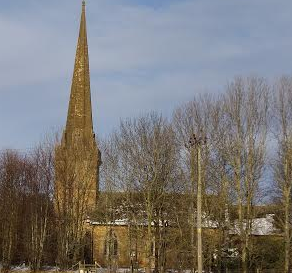 Historic England has published a new research report – Value of Maintenance for places of worship – that uses a sample of 30 listed church buildings across England, based on three successive Quinquennial Inspection Reports for each building.
Historic England has published a new research report – Value of Maintenance for places of worship – that uses a sample of 30 listed church buildings across England, based on three successive Quinquennial Inspection Reports for each building.
image for illustration purposes only
HE writes:
Ongoing, small scale, maintenance is the key to ensuring the long-term health of your place of worship. Regular maintenance reduces the risk of expensive large scale repairs.
Regular monitoring for tell-tale signs, such as blocked gutters, damp patches and slipped slates, can be easily done by the congregation and the community but it is good if one or two people take on the particular responsibility and know how to react to such problems quickly.
The value of maintenance research project
In 2019, Historic England commissioned research into the economic value of maintenance and repair on a sample of 30 listed church buildings across England; based on three successive Quinquennial Inspection Reports for each building. The research aimed to:
- Estimate the repair cost for works to these buildings;
- Estimate the cost for repairing issues when they had been first identified;
- Establish whether prompt attention to minor repair and maintenance would have slowed the development of major repair needs.
The main findings of the research were that:
- The estimated cost for repairing all defects across the sample at the time when they were first identified is approximately £6.95m.
- Delaying repair results in a significantly increased cost liability. Across the sample, delaying repair resulted in an increase of between 15% and 20% over and above the costs that would have been incurred if the defects had been fixed when first identified.
- Approximately 25% of the £6.95m could be attributed to delayed repair and consequential damage caused by the delay. Consequential damage is caused when one problem leads to another e.g. a slipped slate leads to roof timbers getting saturated It is clear that regular maintenance mitigates the potential additional costs associated with both delayed repair and consequential repair.
- Roofs and rainwater goods are the main causes of defects and consequential damage.
- Buildings of different ages generally have the same type of defects, suggesting that research findings are relevant for historic places of worship, regardless of when they were built.
Please note that the research findings are only based on the sample of buildings which were studied. Figures given are indicative and for guidance only.
